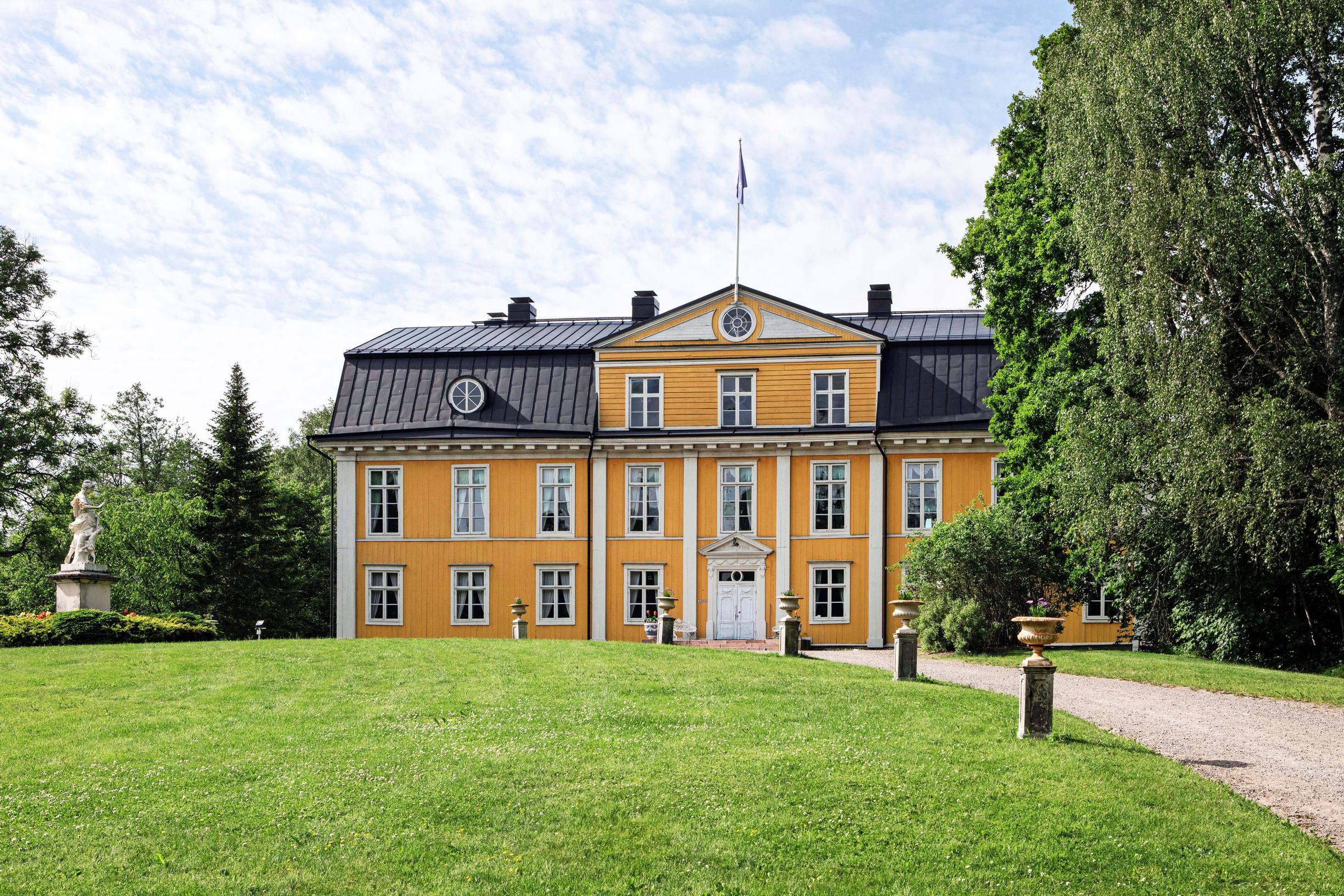
Step into Mustio Manor’s breathtaking 200-year-old garden
Mustio Manor in Raasepori, southern Finland, is surrounded by a magnificent manor park open to visitors. The current owners of the manor and its garden honor the park’s history while subtly yet boldly experimenting with new ideas. “The only constant is change,” says Christine Linder.
Clusters of trees punctuating the park lawn, winding paths, open vistas, ponds, and temples.
The romantic, English-style appearance of Mustio Manor’s estate garden has greeted visitors since the late 19th century. At that time, Fridolf Linder, who was enthusiastic about exotic trees, transformed the park—originally featuring elements of a baroque garden—into a more informal landscape park and planted an impressive collection of trees here, including elms, Siberian firs, cork trees, poplars, and walnuts.
Some of these old trees have had to be removed, but you can still admire majestic lindens, Siberian larches, and ashes in the park. The enormous oaks are possibly up to 400 years old—there once was a chain of oaks stretching from here along the Mustionjoki River all the way to Fiskars, another village in Raasepori.
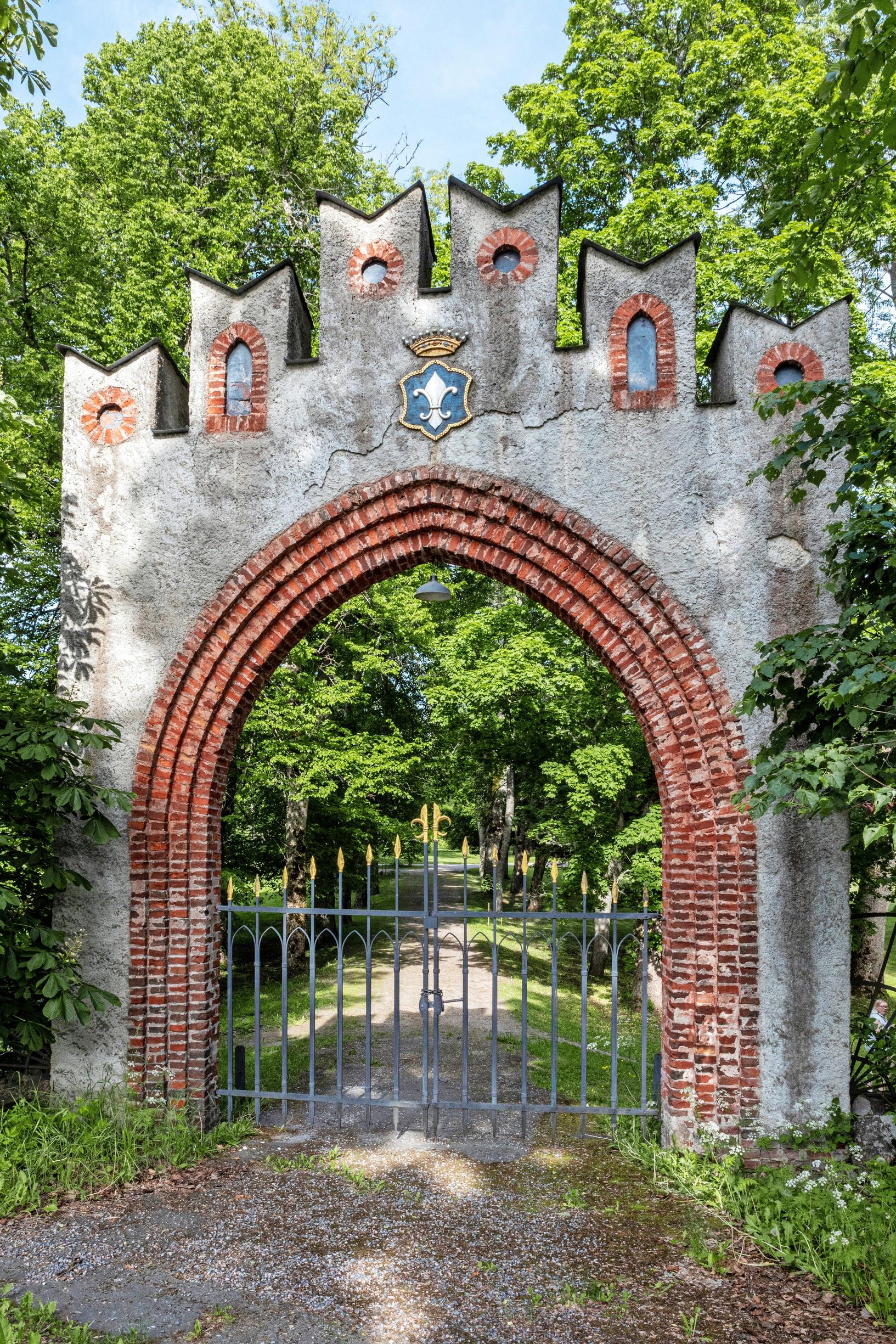
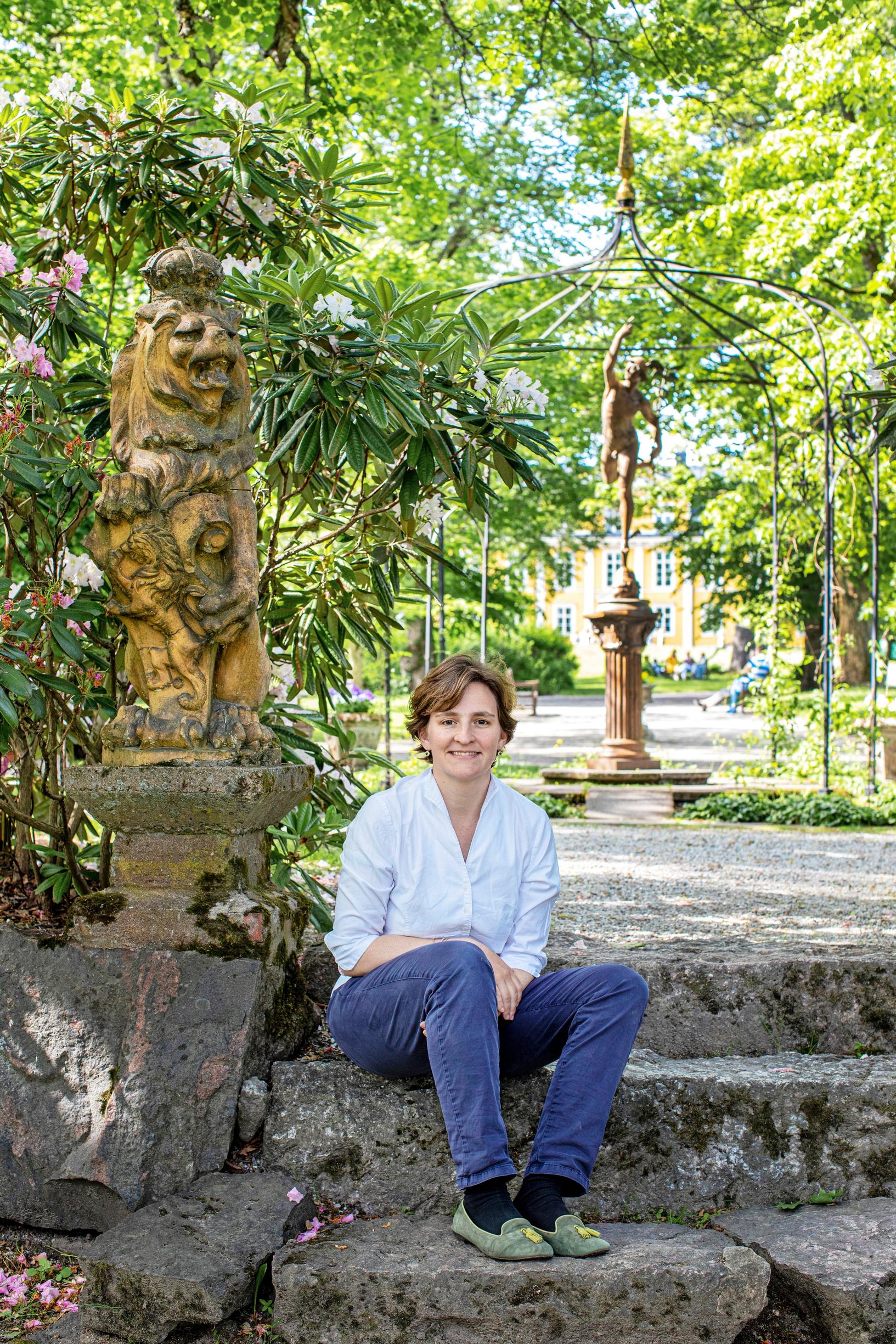
Mustio’s park is still a haven for tree enthusiasts. German-born Christine Linder is the CEO of the manor and the spouse of the current master, architect Filip Linder. Christine oversees the business operations of the foundation-owned manor and its park with evident great affection. The 22-hectare landscape park offers a wealth of experiences and is open to the public free of charge year-round.
I meet Christine at one of her favorite spots—the manor house steps. The view from this sheltered spot to the estate garden is magnificent: in one direction, you can see straight to the hill on the opposite shore between the oak-lined avenue and rhododendron plantings; in another direction, your gaze travels over the undulating lawns to the statue path and the fountain by the river.
We set off from the manor down toward the shore as Christine introduces the park’s newest tree arrivals.
“These copper beeches have joined the European beeches in the park because I wanted to add some red color here to complement the greenery. They are from my home forest in Germany,” she says, gesturing toward the trees with wine-red leaves.

1756
Magnus Linder I becomes the owner of Mustio. He builds the Great Garden, enclosed and divided into sections, featuring a utility garden, typical for the time. He cultivates grapes in the greenhouse, and apple, pear, and cherry trees in the orchard. There is also a picturesque park, a gazebo, and ornamental plants in the garden.
1782
Magnus Linder II becomes the owner of Mustio. The park is renewed with inspiration taken from both baroque and landscape garden styles: he builds the long main axis of the Baroque Garden, and the lawn views and pavilions of the romantic landscape park are completed.
The baroque-style main axis runs from the manor to the hilltop pavilion on the opposite shore—a folly structure typical of landscape gardens.
By the pond, there is currently a gazebo imitating an ancient circular temple. Magnus Linder II built its predecessor in the late 1700s.
Magnus Linder also builds the current main building. The manor house is completed in 1792. The double windows of the mansard-roofed wooden building were the first in Finland. Photo: Signe Brander, 1910. Finnish Heritage Agency.
Christine’s goal is to increase the species diversity of the park and the variety of colors and shapes of the trees. One of her most exotic experiments is the American tulip tree (Liriodendron tulipifera), which has so far survived the winters of southern Finland. She hopes for the same success for her newest favorite, the ginkgo, also known as a living fossil.
Christine is interested in all plants, but she especially loves trees.
“Even as a child, I always roamed the forests with my forester father.”
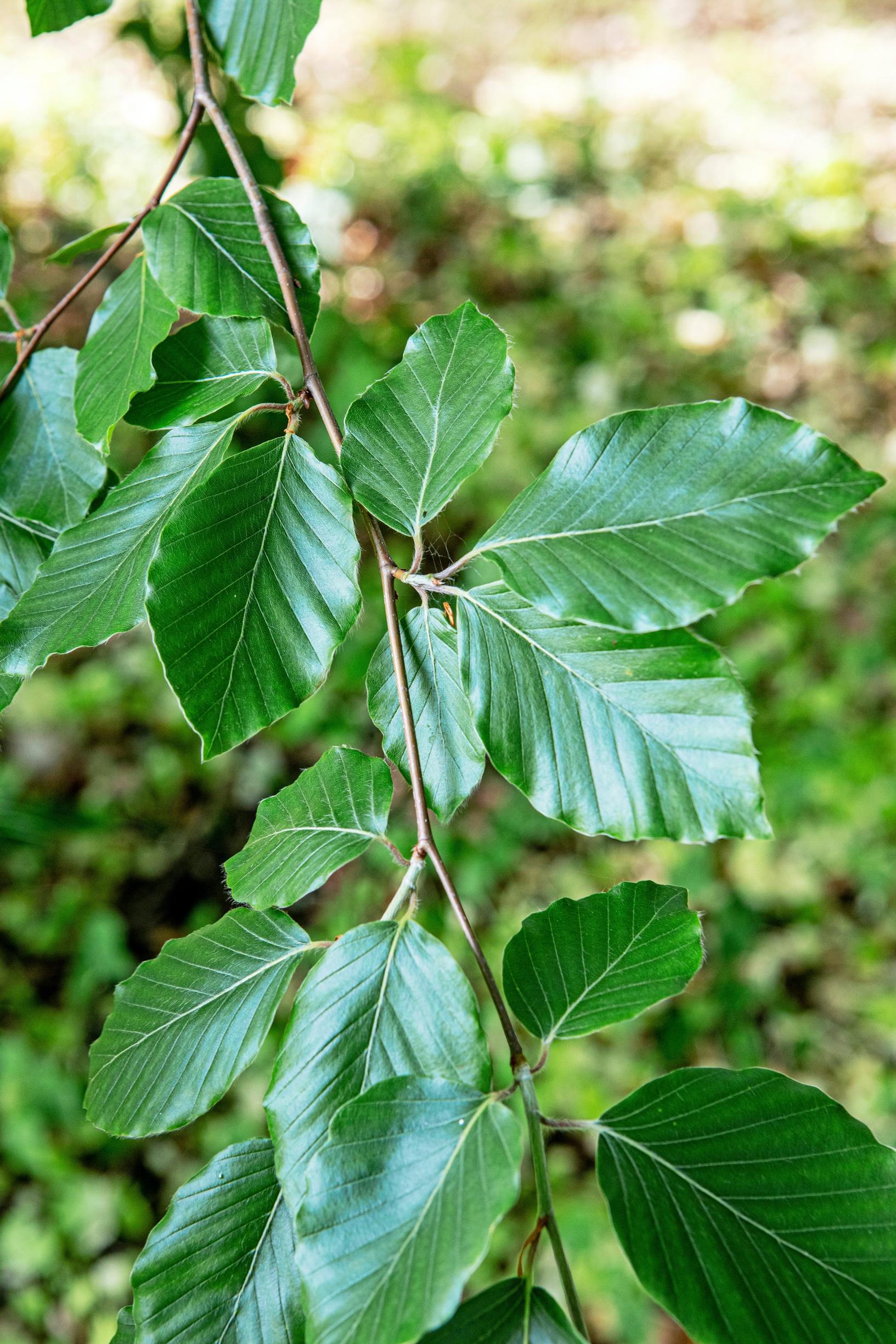
Christine’s father has played an important role at Mustio as well. He was a friend of Filip’s father, Magnus Linder, and he brought beeches here during Magnus’s time.
Christine says that when acquiring new trees, they have to carefully consider the right place for each and find the appropriate species or strain.
“We’re now thinking about where we could plant magnolias. We get plants from a local nursery, Puutarha Tahvoset, which has long tested the adaptability of different strains to Finnish conditions.”
Mustio’s park has changed over the centuries, and there hasn’t even been an attempt to preserve it in its original form.
“The only constant is change,” Christine notes as she talks about the old trees that occasionally have to be felled.

1824
Magnus Linder III becomes the owner of Mustio. A geometrically arranged garden terrace is set up on the north side of the manor, offering a view of the river. He continues to shape the park further in the spirit of the landscape style.
Magnus Linder III is said to have brought back a sculpture depicting the hunting goddess Diana and her dogs from his European travels.
1863
Mustio is passed down to Fridolf Linder. The park is renovated and expanded to closer resemble an English-style landscape garden. The park gets numerous exotic tree plantings, sculptures, urns, and fountains. The orchard expands.
1896
Fridolf, who has no children, leaves Mustio to his cousin Constantin Linder. He leases Mustio to his son Hjalmar. Photo: Signe Brander, 1910. Finnish Heritage Agency.
Christine has been thinking that when they have to fell the large arborvitae planted by Fridolf Linder, which is now unfortunately suffering from a plant disease, the view from the manor’s steps to the river will open up again.
The enormous Canadian hemlock in front of the manor has also been lost to plant disease, but its removal has made the garden more open, as well.
Despite the changes, this is still one of Finland’s most impressive estate gardens and has managed to retain its character as a landscape park.
After winding along the statue path to the new pavilion, we arrive at the small Central European orchard established by Christine, where she has planted cherries, apples, and a single pear tree. According to Christine, the current apples are not as good as those from Fridolf Linder’s time; being sour, they’re mainly suitable for making vinegar.
Fridolf had a large orchard at Mustio, producing apples and pears for both personal use and sale. He bred new apple varieties by growing them from seeds, with ‘Mustion Bergamotti’ and ‘Mustion Bonsdorfer’ winning first prize at the Helsinki Garden Association’s autumn exhibition in 1892.
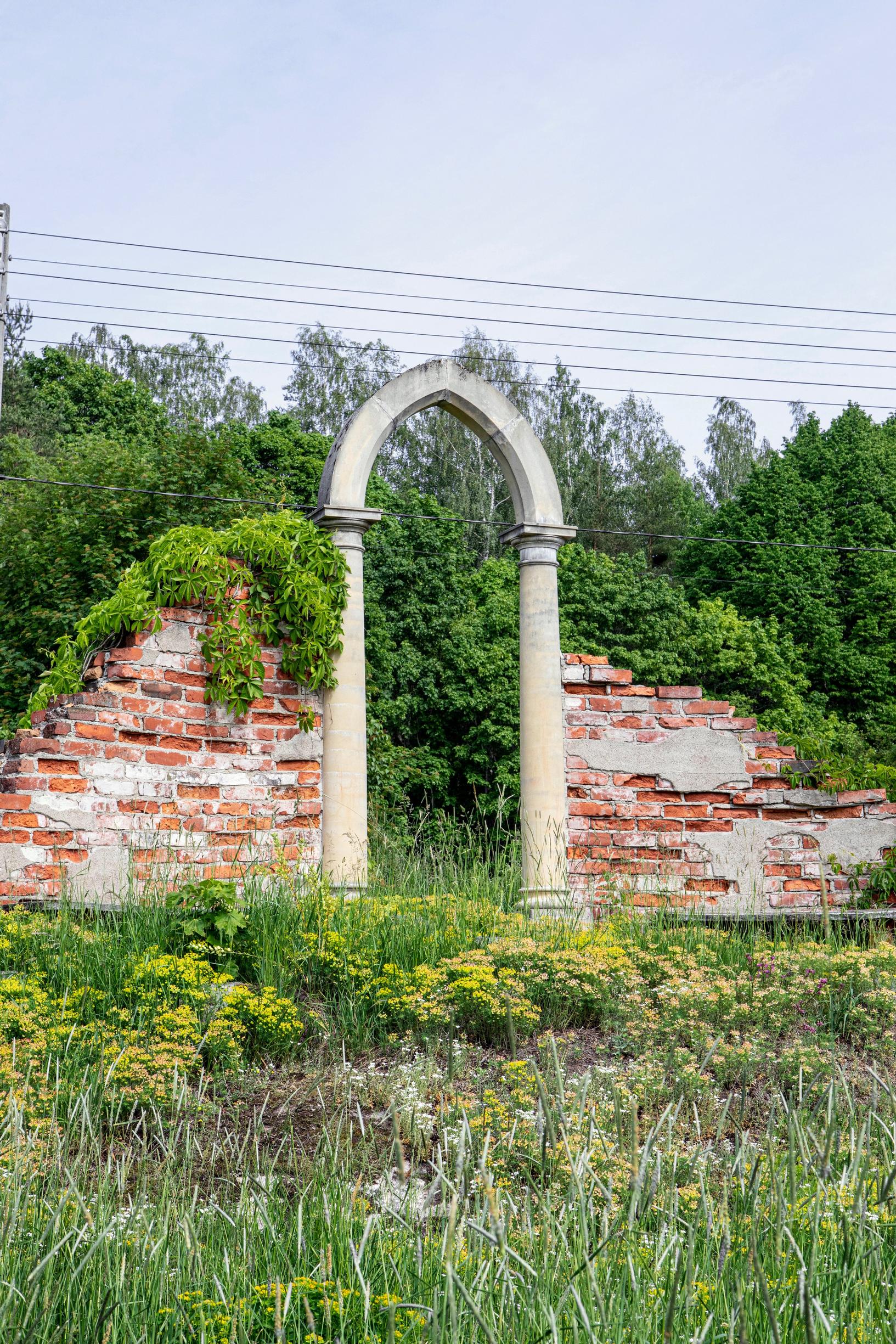
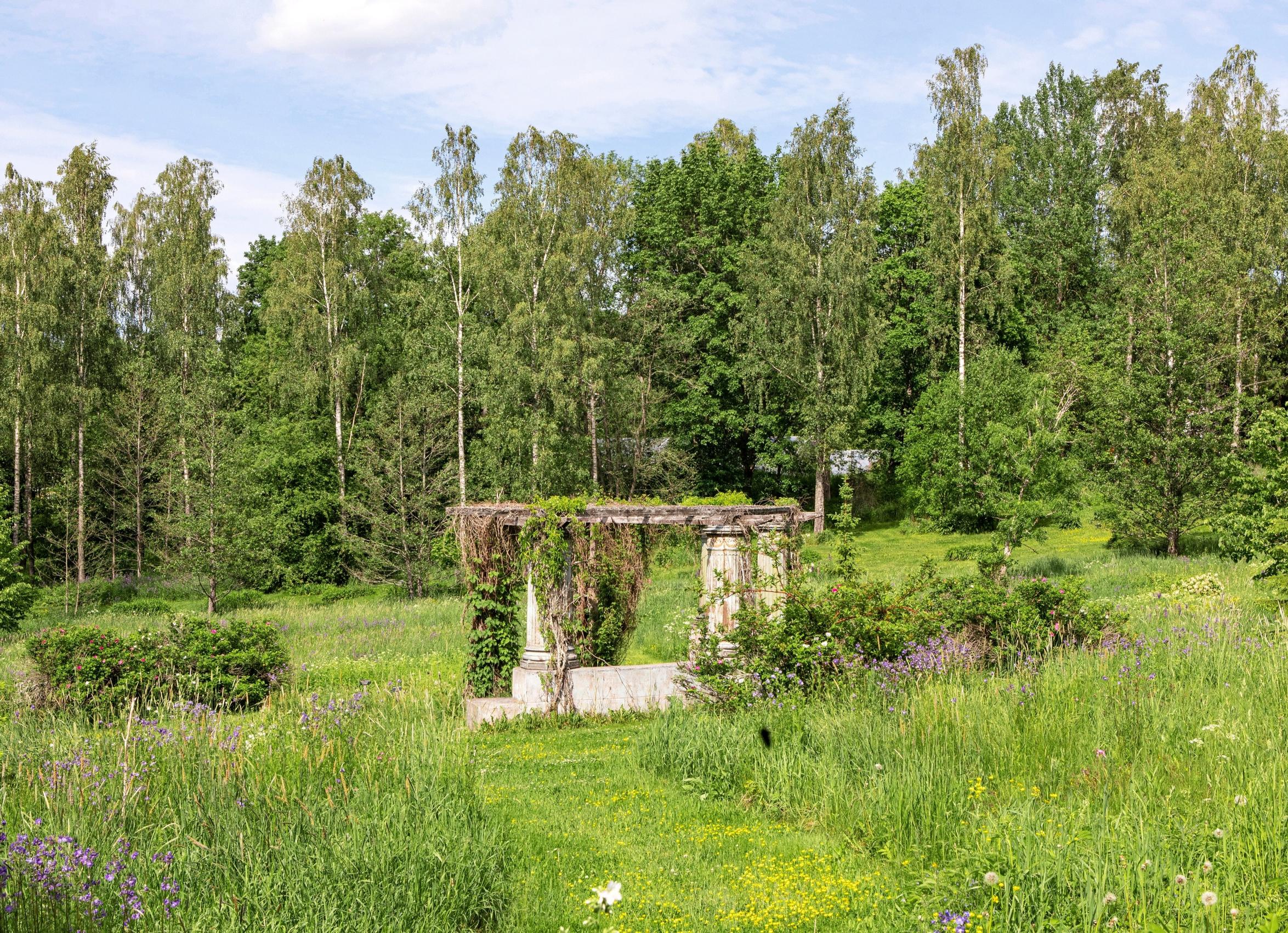
In the 1800s, estate life also included a greenhouse for fruits, vegetables, seedlings, and flowers. The orangery in Mustio Manor’s park, built in the 1840s, has been preserved, and there the residents once grew grapes, coffee plants, pineapples, and oranges. Now the orangery has been transformed into a sauna, and there are no longer home-grown pineapples on Mustio’s dinner tables.
Instead, the Linnankrouvi (“Castle Inn”) restaurant, operating in the old stable draped in climbing hydrangeas, now makes use of the park’s offerings: they make syrup from maples, pick acorns for desserts, and gather wild herbs for salads. Oregano and lovage are grown on-site, as well as raspberries and currants of all colors. Plants are also about aesthetics, both in the park and in the kitchen.
“What could be more beautiful to put on your plate than a chive flower?” Christine sighs.

Early 1900s
Hjalmar Linder is now the master of Mustio. The old Great Garden is removed. The trees in the park have reached magnificent proportions. There are sharply defined flower beds on the Manor's lawns; they were fashionable at the time. In summer, palms and agaves grow outside in pots.
After the Finnish Civil War in 1918, Hjalmar, once the richest man in Finland who had been criticizing his own social class, is labeled an outcast. He gives Mustio to his half-brother, sells his property, and eventually takes his own life in 1921. The family remains the owner of the manor until it is sold in 1941.
1941–1985
Mustio Manor has several different owners.
1985
Magnus Linder, Filip’s father who was born at Mustio, buys the estate back to the family. Renovations in the park begin in the 1990s.
Christine’s father-in-law, Magnus Linder, began renovating the park in the 1990s by creating eye-catching focal points that emphasize the landscape using follies, decorative structures typical of English landscape gardens. Mustio did have these “useless buildings” from the start, but now the park is adorned with their renewed versions.
One such building stood on the hill opposite the manor: a wooden set piece from the 1700s, painted to resemble a stone medieval castle tower. It has been rebuilt according to Filip’s designs—this time with durable stone materials.
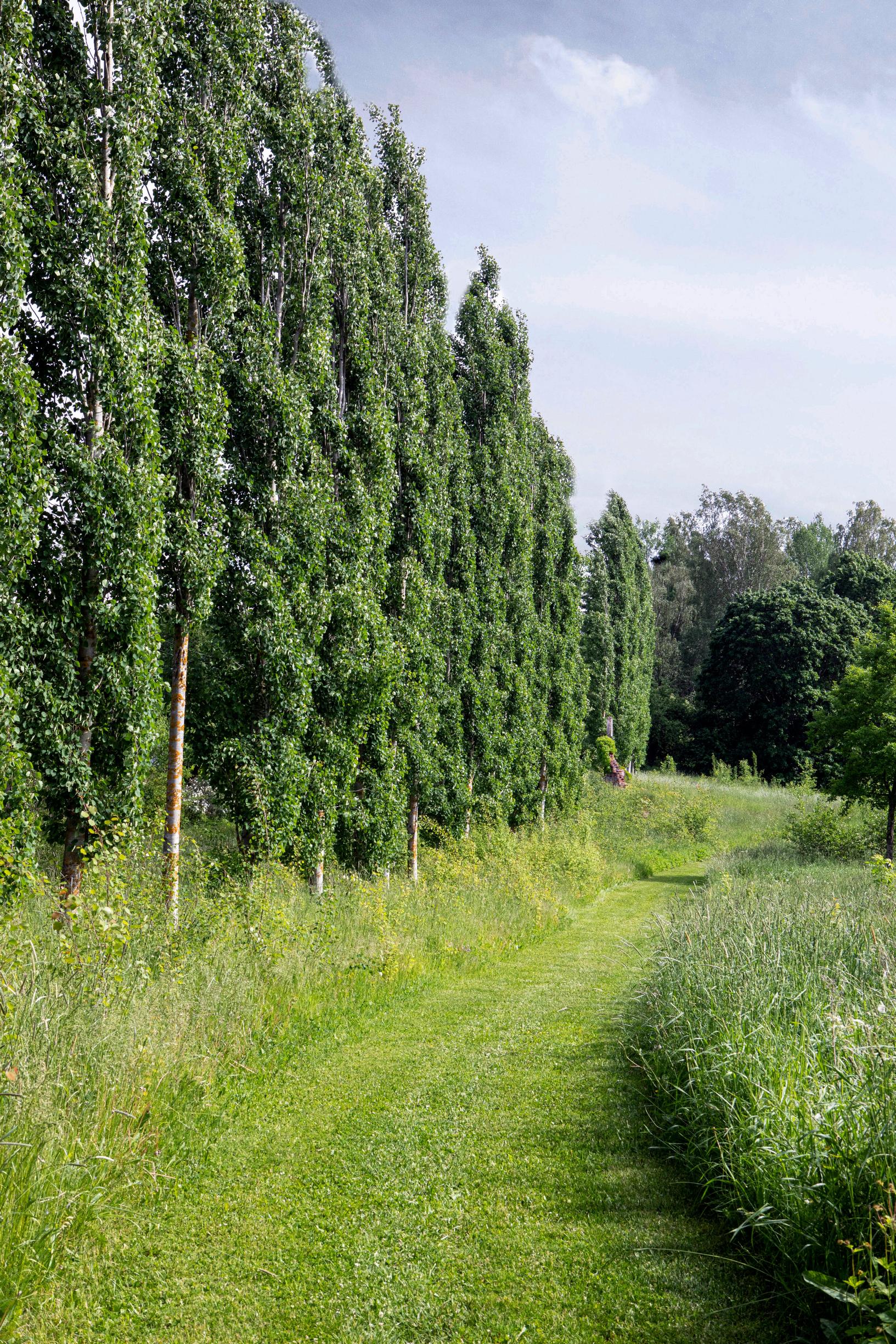
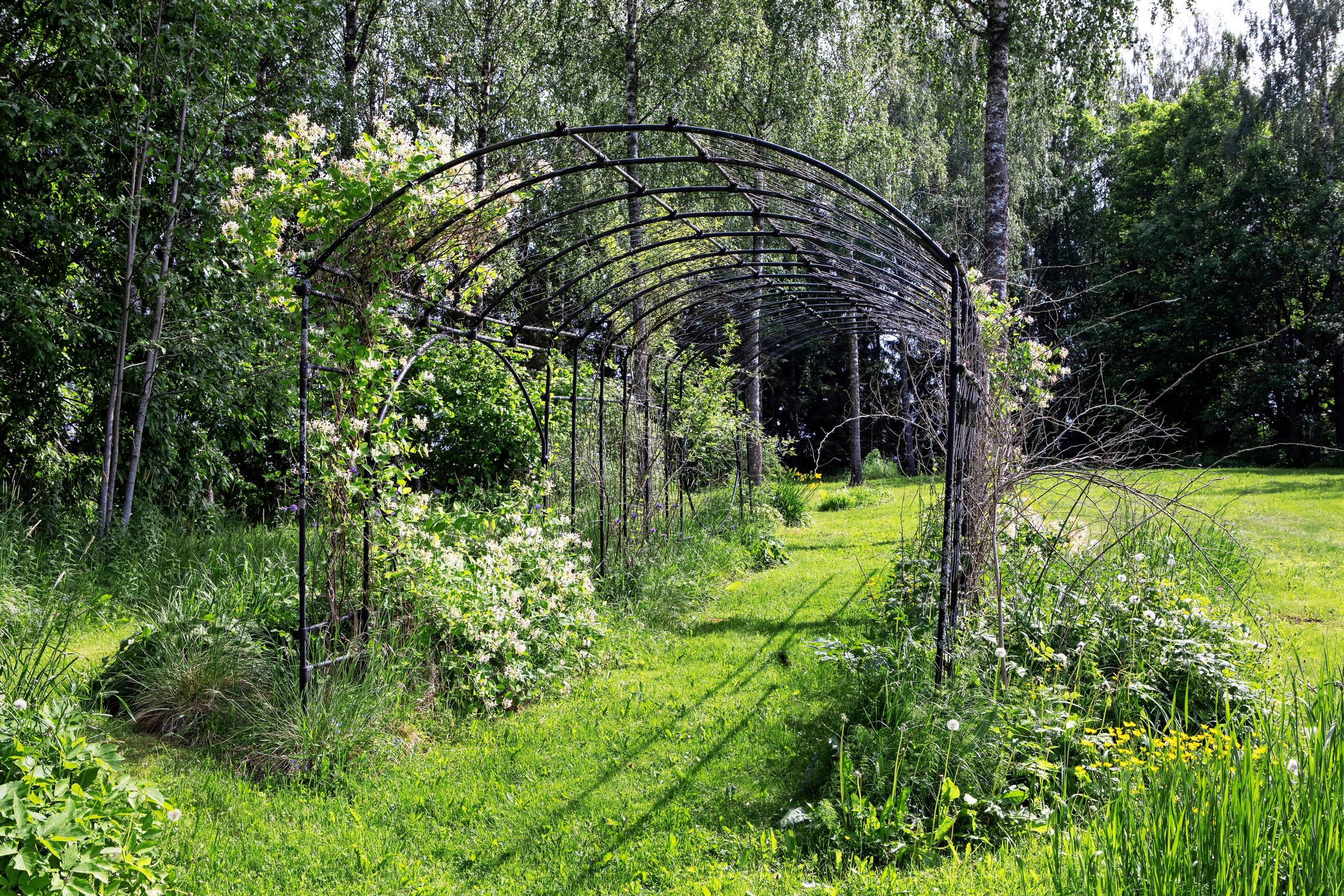
One of the newer follies is a temple on the meadow across the river.
“My father-in-law was an auction enthusiast,” Christine says as we walk along the winding riverside path to the edge of the meadow with a view of the temple.
“He bought what he thought were lampstands resembling pillars of an ancient temple on Sotheby’s auction website, based solely on a photo. He was surprised when a truck waiting for him at the Helsinki harbor contained much larger pillars than expected. Their height had mistakenly been interpreted in centimeters instead of inches. But he and Filip came up with a brilliant solution by building a circular temple pergola from the pillars on the flower meadow.”

2010–
Mustio Manor is passed down to its current owners, Filip and Christine Linder. They spend their summers in Mustio near the manor, raising the next generation of the Linder family here. In winter, they live in Germany.
New tree species and a pavilion are added to the park, which is open to the public. Hotel and restaurant operations commence. The manor house is managed by Stiftelsen för bevarande av Svartå Slotts kulturarv sr, a foundation dedicated to preserving Mustio Manor’s cultural heritage.
The old stable, adorned with small towers, now houses the Linnankrouvi restaurant.
The semi-wild blooming meadow attracts bees and other insects. Christine intends to sow more varieties of flowers there, but she feels it’s important to preserve native flowers too. Natural meadows and plantings that mimic them are now fashionable in international garden design, too.
There are beautiful, mowed grass paths on the meadow, and one leads to the temple where visitors can sit and admire the river scenery.
Mustio’s own honey-producing beehives are located at the edge of the meadow.
“The manor used to have its own chickens here, too, until a visitor let their dog loose one day.”
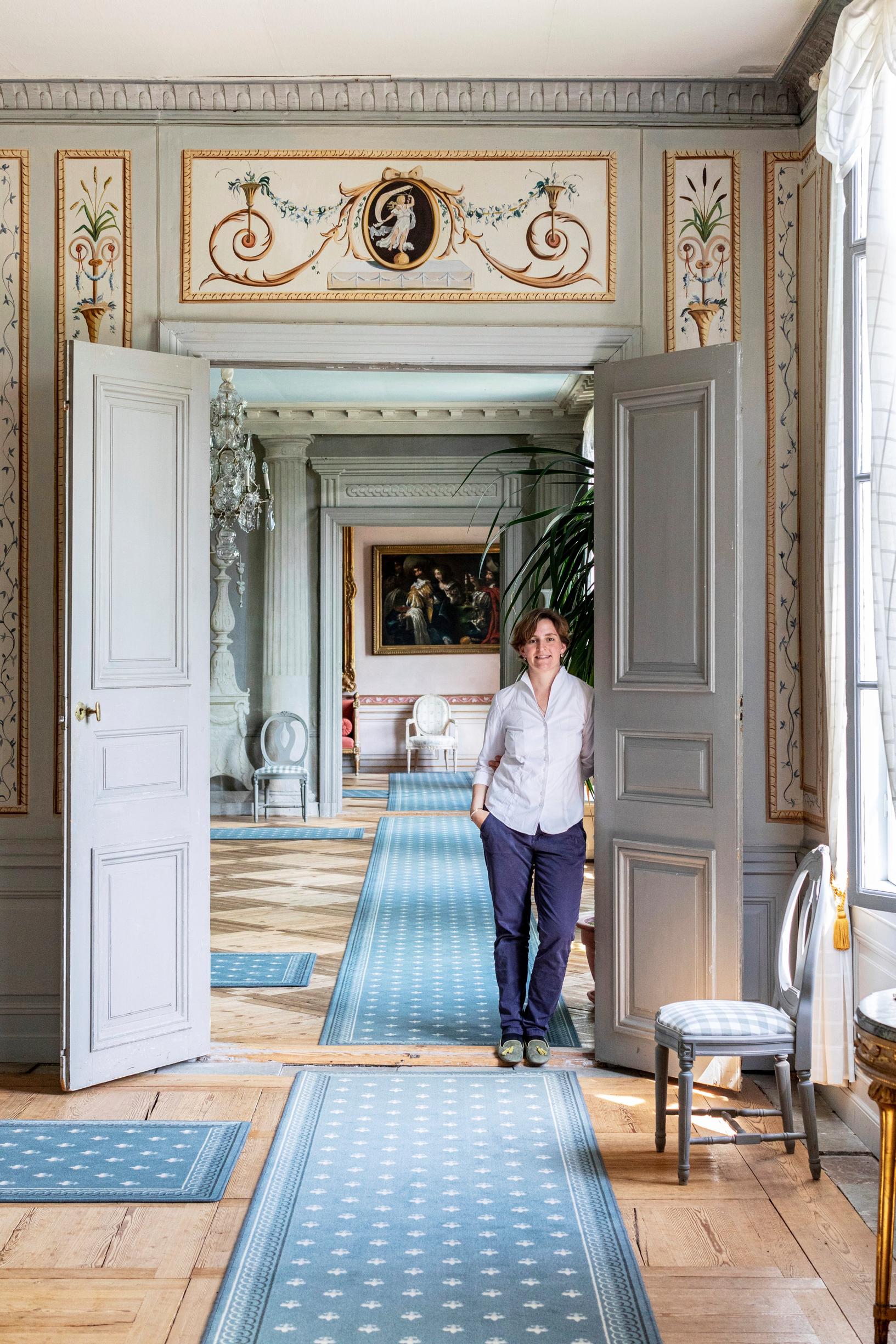
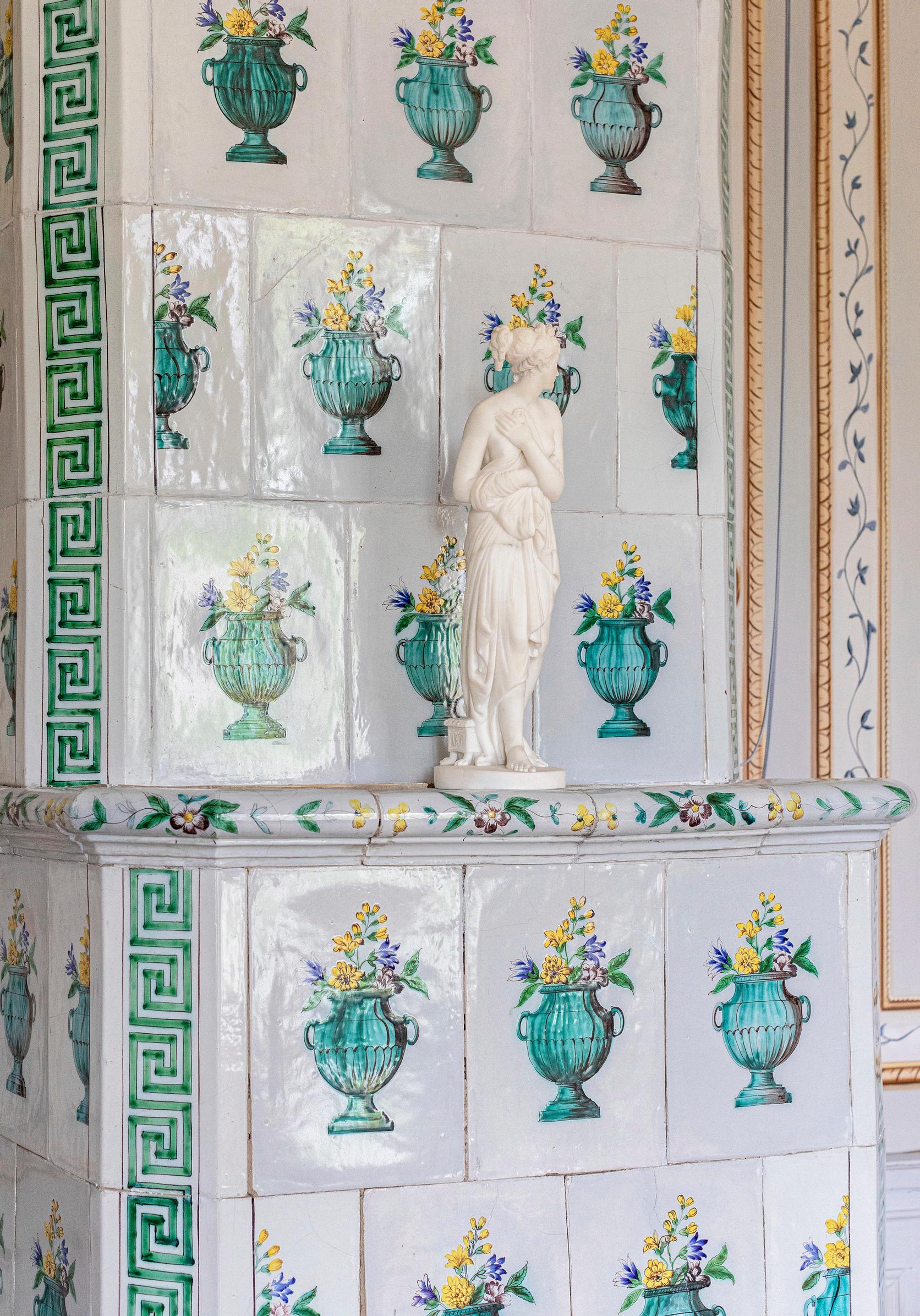
At the end of the day, we continue along the grass path past the poplar row and the folly imitating an old archway, then onto the gravel path lined with rose bushes, until finally crossing another bridge by the stone-built granary to the summer theater and back up to the manor.
As evening begins to fall, old-fashioned streetlamps light up along the gravel path.
Sources: Ruoff, E. ‘Vanhoja suomalaisia puutarhoja.’ Otava, 2001. Rosengren, C. ‘Kolme vanhaa suomalaista puutarhaa.’ In Häyrynen et al. (eds.) ‘Hortus Fennicus. Suomen puutarhataide.’ Viherympäristöliitto, Puutarhataiteen seura, 2001.












